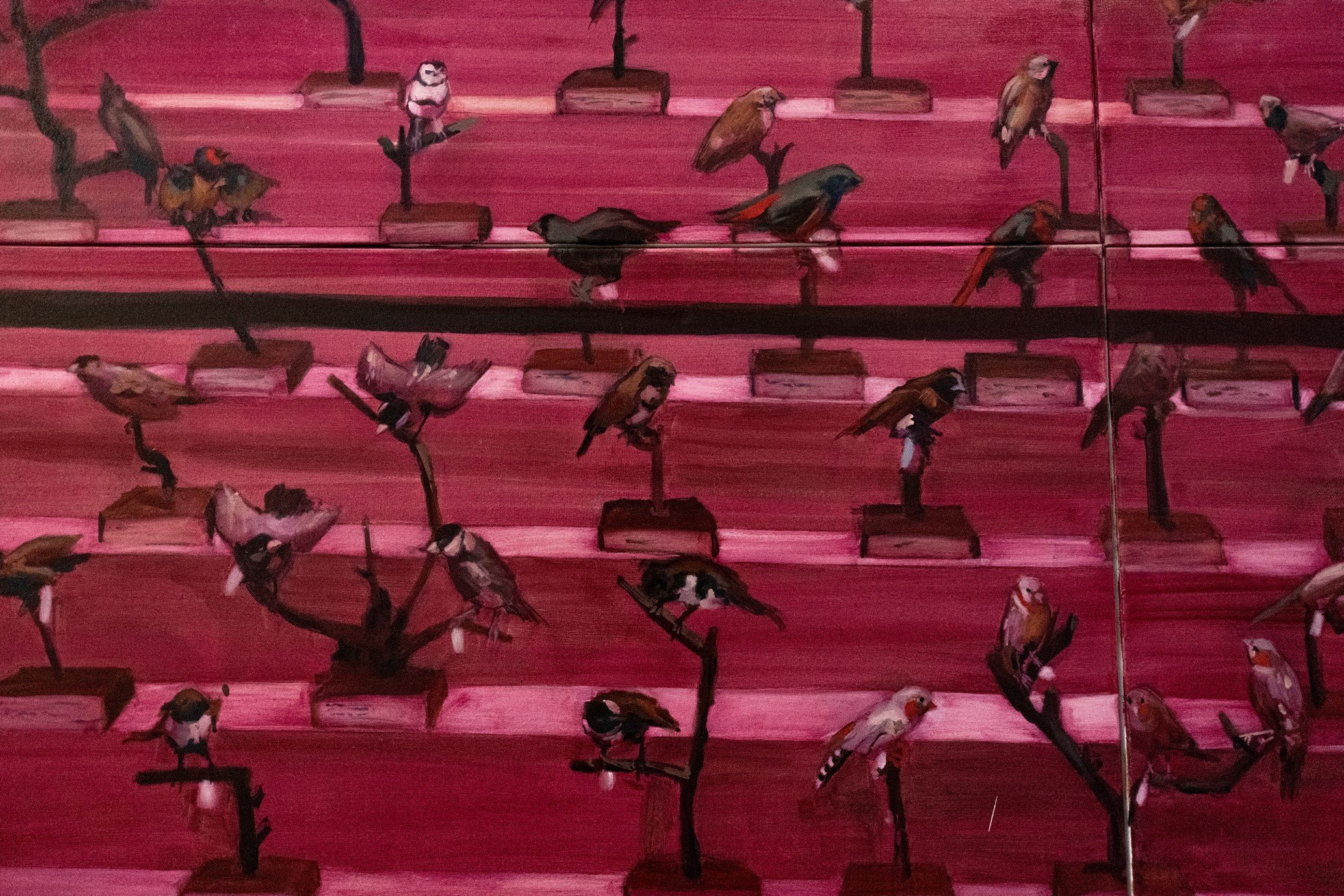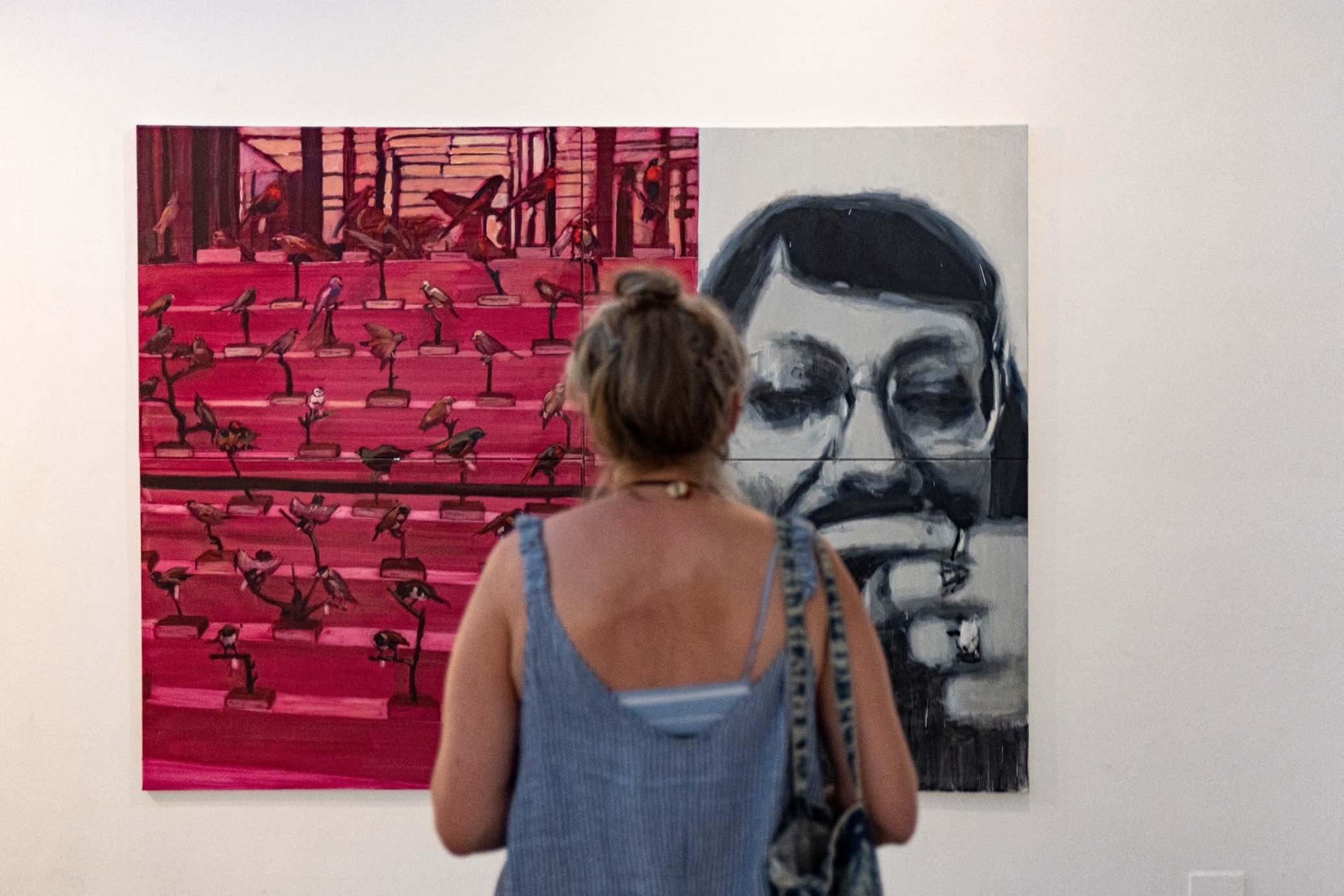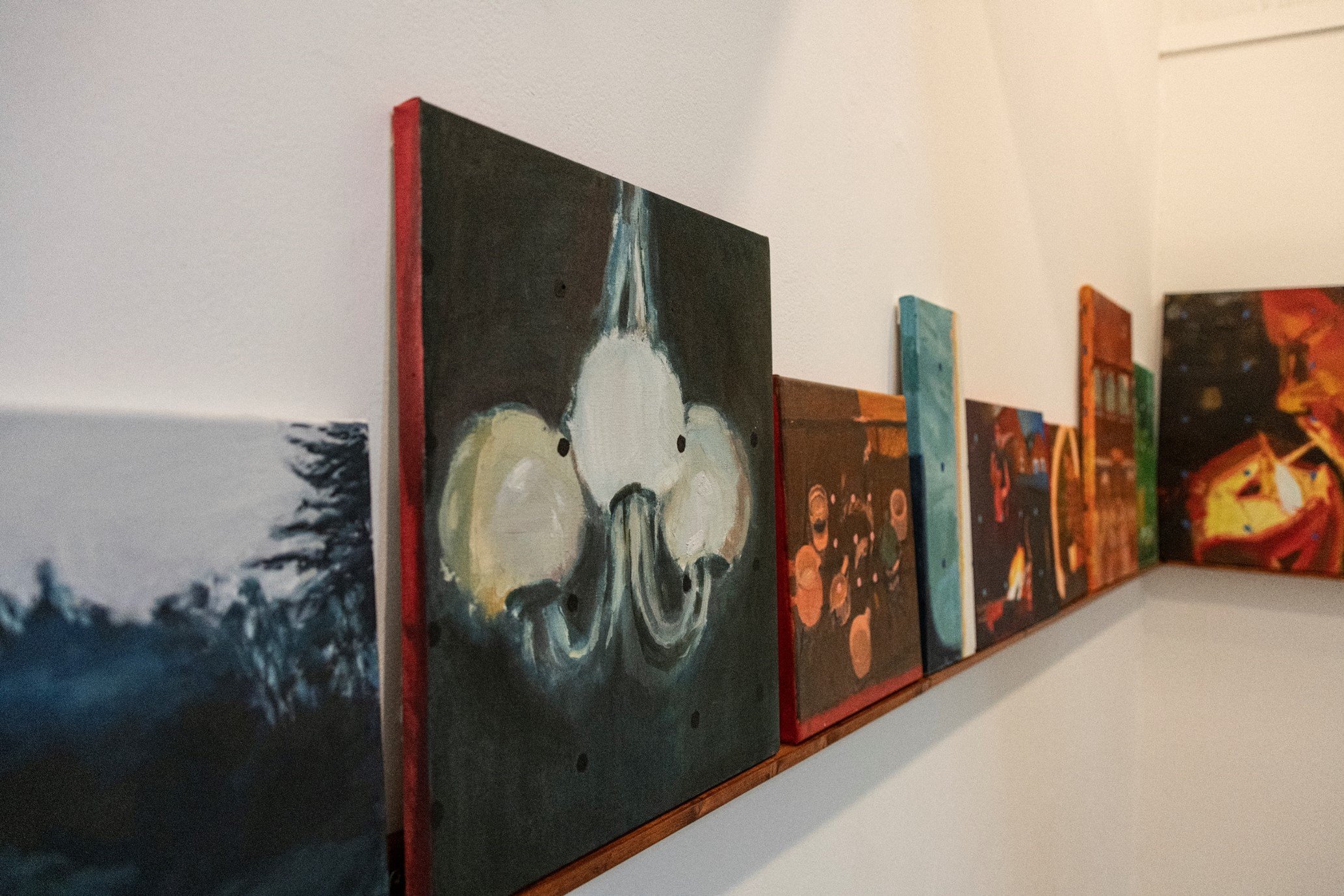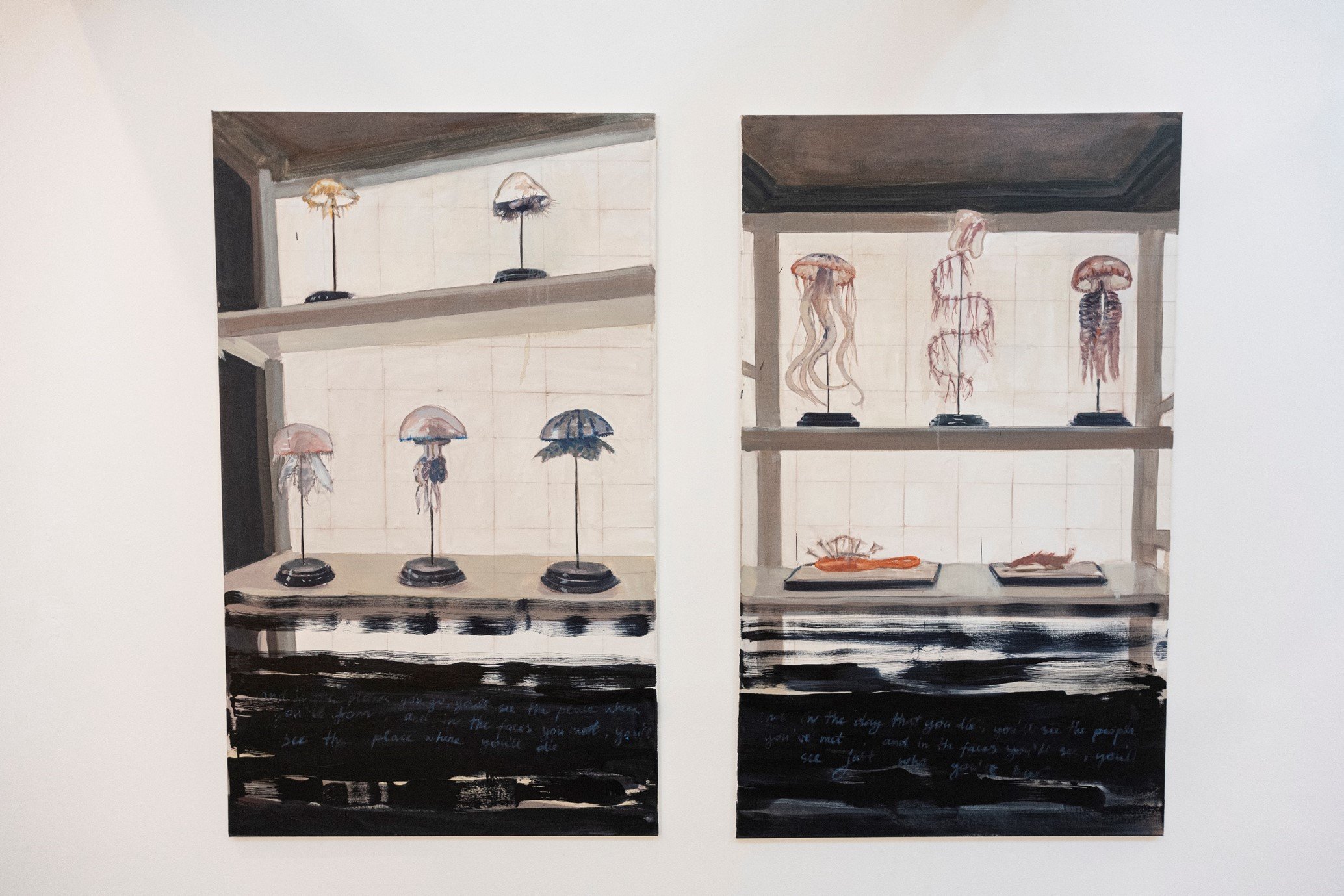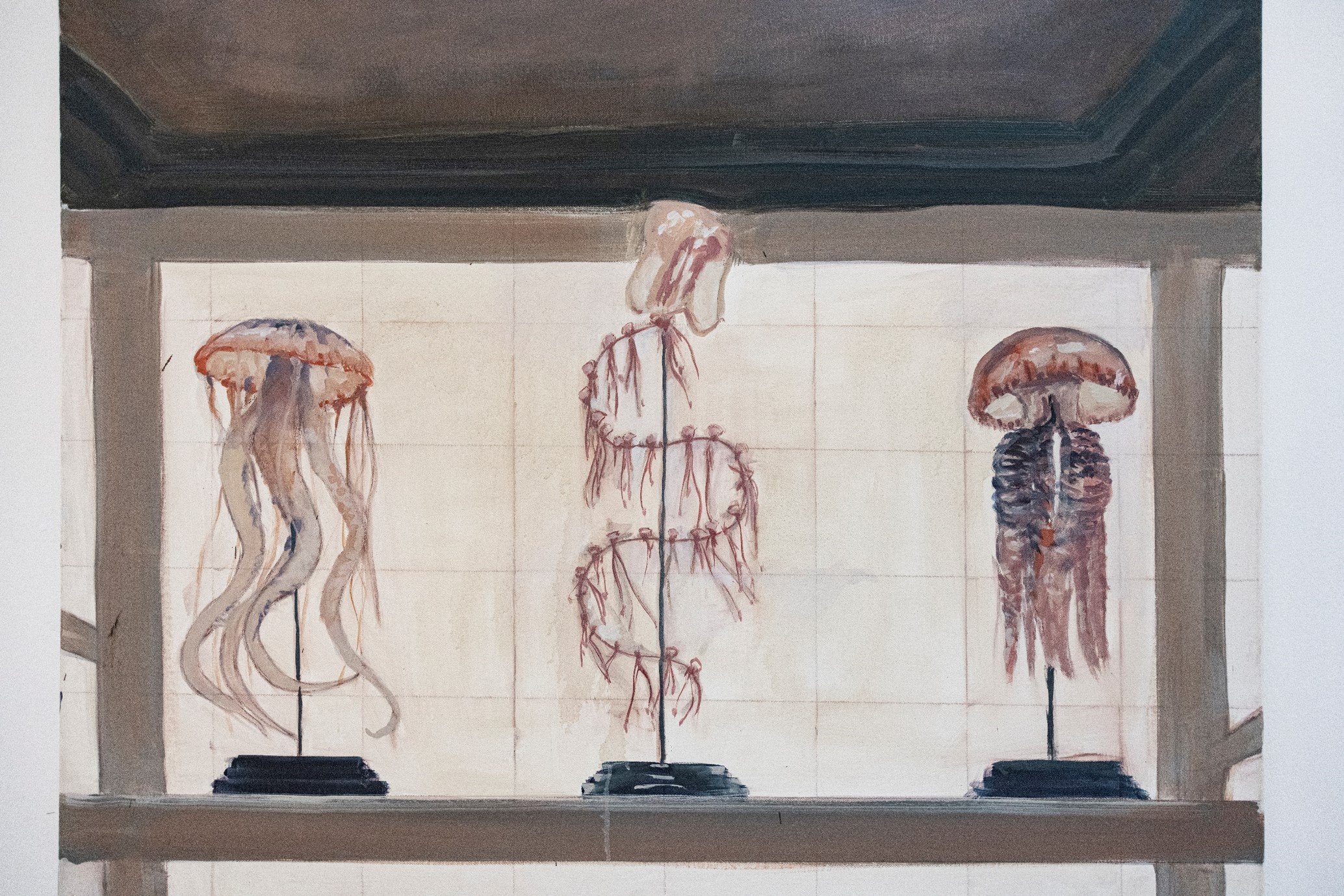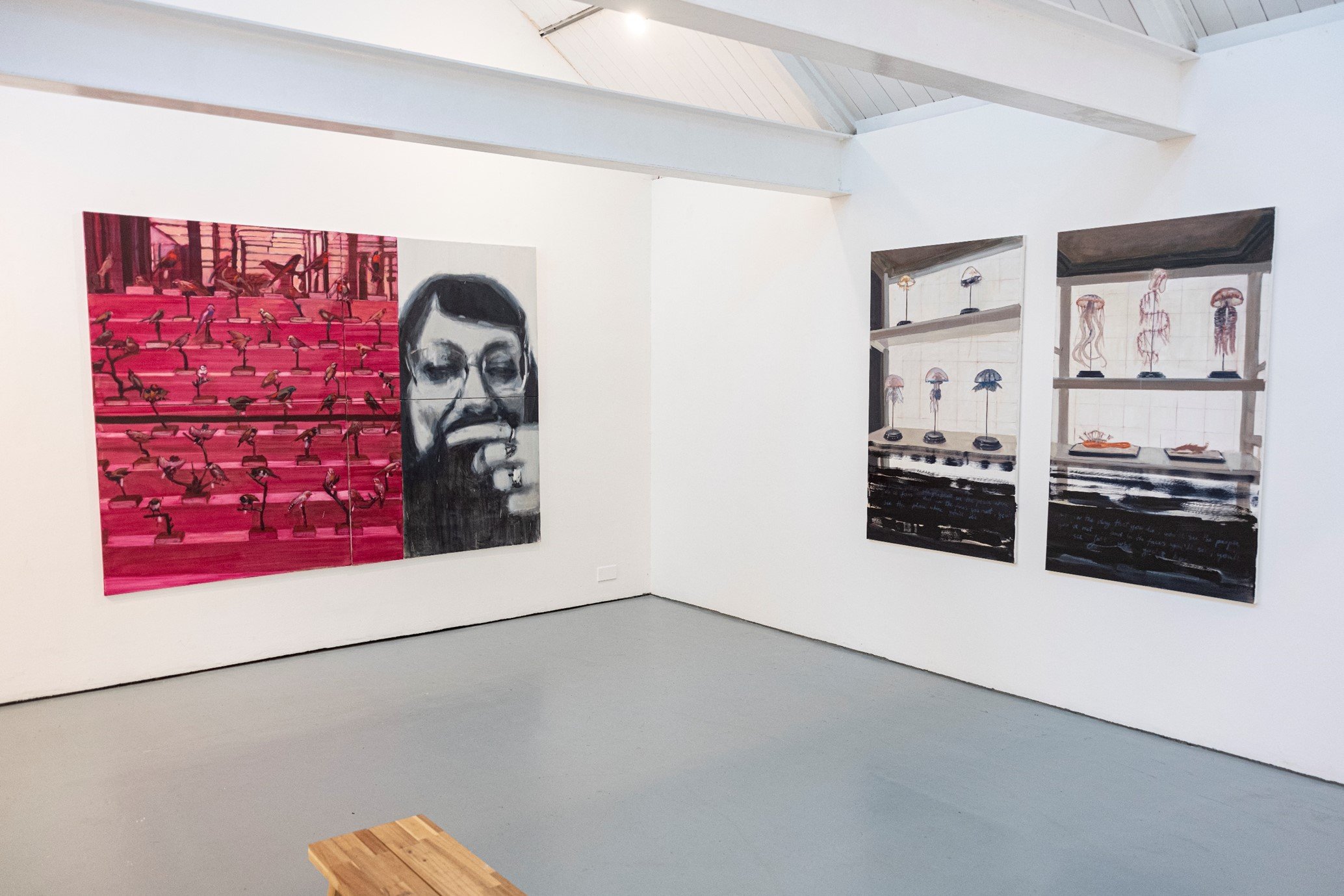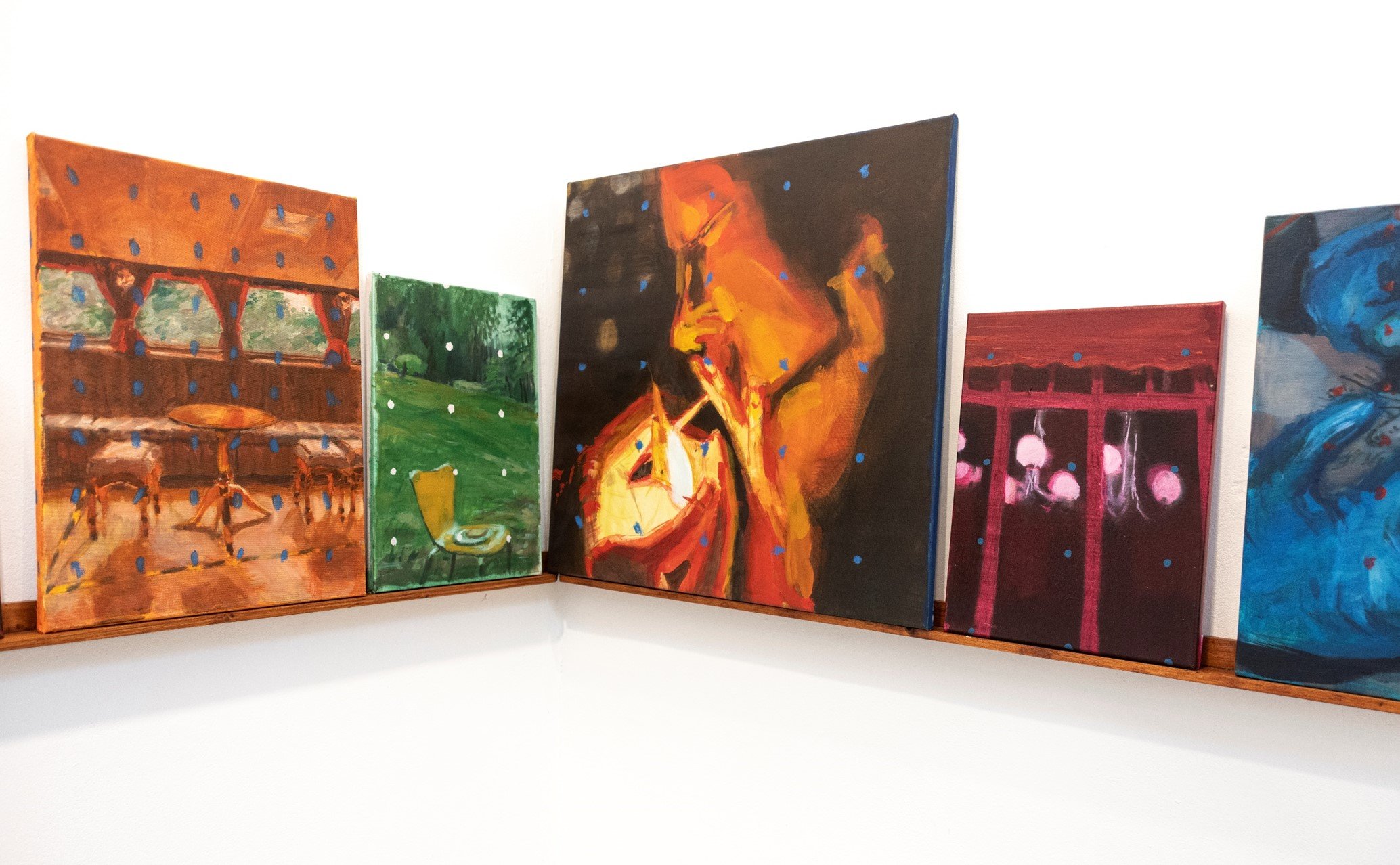#163 Ingrida Bagdonaité, COMFORTABLY UNCOMFORTABLE
23 June - 30 July 2023 | Thursday to Sunday, 12 - 6pm
The Opening Party took place on 22 June.
Press Release + Exhibition Map
Ingrida Bagdonaitė (b. Lithuania 1991) is a painter based in Norwich. She studied at Norwich University of Arts (2020) and Vilnius Art Academy (2014).
In 2019 Ingrida exhibited in the finalist show at Young Painter Prize XI showcasing upcoming painters of Baltic Countries, and has also exhibited in the UK, Lithuania and Germany.
In this, her debut solo show Ingrida presents a new collection of paintings further exploring questions of her practice: translation of the image, notion of home, abandonment, and fragility of time through personal, unseen- reaching into collective memory.
A conversation between Ingrida Bagdonaité and Yuyu Tse
YT: First of all, how do you feel about your first solo exhibition, particular considering its location in Norwich?
IB: I am extremely grateful for this opportunity, and I never thought I would be approached by committee, thank you all so much again. I always thought my first solo show would be back home in Lithuania, but here we are… After my few years break with not painting after BA in 2014, I could not think of better place of doing it than Norwich as here I got back to my practice by doing an MA in fine art, created new network to live in through university years, created my strongest work and simply it’s a place I call home now.
YT: Does the exhibition title “COMFORTABLY UNCOMFORTABLE” represent the vulnerability evident in your body of work?
IB: It does, all my work is about it. I don’t believe I could do any good in my paintings if I wouldn’t be …This name simply talks about condition of migration. It defines the questioning of home in my practice, a choice to be comfortably uncomfortable as a state…. It is a theme I do not like talking about however I ‘feel’ it in my work all the time and feel very comfortable contemplating it here…because this vulnerability becomes not the otherness but something it can be related to. I never liked the topic as I believe I am fortunate to be anywhere, live anywhere and have that choice…I am merely a person that transitioned geographically and accidentally settled due to distractions that came along. But at the same time our heritage and history, set of traditions and language that we are brought up in forms our identity and dictates where we are most comfortable and accepted in a society. I can not tell you how often I feel like an alien when discussion turns to childhood tv shows, film or music. Because even though everything now seems westernised and globalisation is all around us, I did grow up being first free generation of a post-soviet country…and that is big part of my identity.
YT: I am interested in the question raised around revising memories and the idea that they undergo changes when revisited. In the process of painting, does your memory change as you revisit the painting?
IB: The translation of memory into painting is most fascinating part of the process for me.
From when it happened it sits in your memory…every time you remember it you change it ever so slightly… At the same time, it is caught in photography… Whilst painting both go in diffusion: memory and photographic copy of a split second and they translate into something new. I don’t believe our memories are stable at all. They constantly change and rewrite. It is a construct that is alive and changing. For example, I have this memory that I fell when I was about 3 years old while grandad was looking after me and from that fall I got a scar on my knee. My mum however clearly told me that the scar is from different occasion from when we where building our family home and I tried to lift some bricks and fell and split my knee open then. You see I don’t remember that at all and my mind simply choose to pick that memory to make associations with that scar on the knee… the painting in the end represents the set of ideas, a feeling and becomes abstract for me when I think about time and where it sits. Painting creates the distance between me and the memory as well. Usually after I finish it association with the memories disappear as it becomes something different.
YT: What drew you to use blurred tones and strong overlays in this body of work?
IB: Painting is intuitive and sometimes it feels I must explain things to myself after they have happened. I used to work very academically and do small colour sketches etc. before I get to the final. There is still a certain amount of planning now, but I play more. I try to ‘’delete’’ the image in a way after I made it, pull things out of it to say exactly what I want to say with colour mainly. In puzzles project it felt the dots patterns systemised fictional archive.
Richterian blur is used on some of the paintings… is a strong painting technique that removes a focus from a whole picture and creates same intensity over all surface of the canvas creating mystery and ambiguity at the same time.
YT: Can you tell me more about the dialog between professional and personal archives?
IB: I guess you mean the personal photography and the imagery of zoo cabinets… The personal archives are what I usually work in my practice with. The idea to put the imagery of museum cabinets in juxtaposition came along spontaneously. Firsts time museum taxidermy motive came to my mind 2018 when I was walking around Norwich Castle Museum. I still have picture of three ducks suspended in the air mid landing. The animal imagery in these paintings is collected from Vienna’s Natural Museum. What fascinates me is how all these animals are portrayed alive, how we try to preserve it in this way. The question I raise is can I preserve memories like that, in the painting…or is it a mere impossibility due to its ever-changing construct. An archive of fleeting moments, memories that have already changed over translation too many times.

